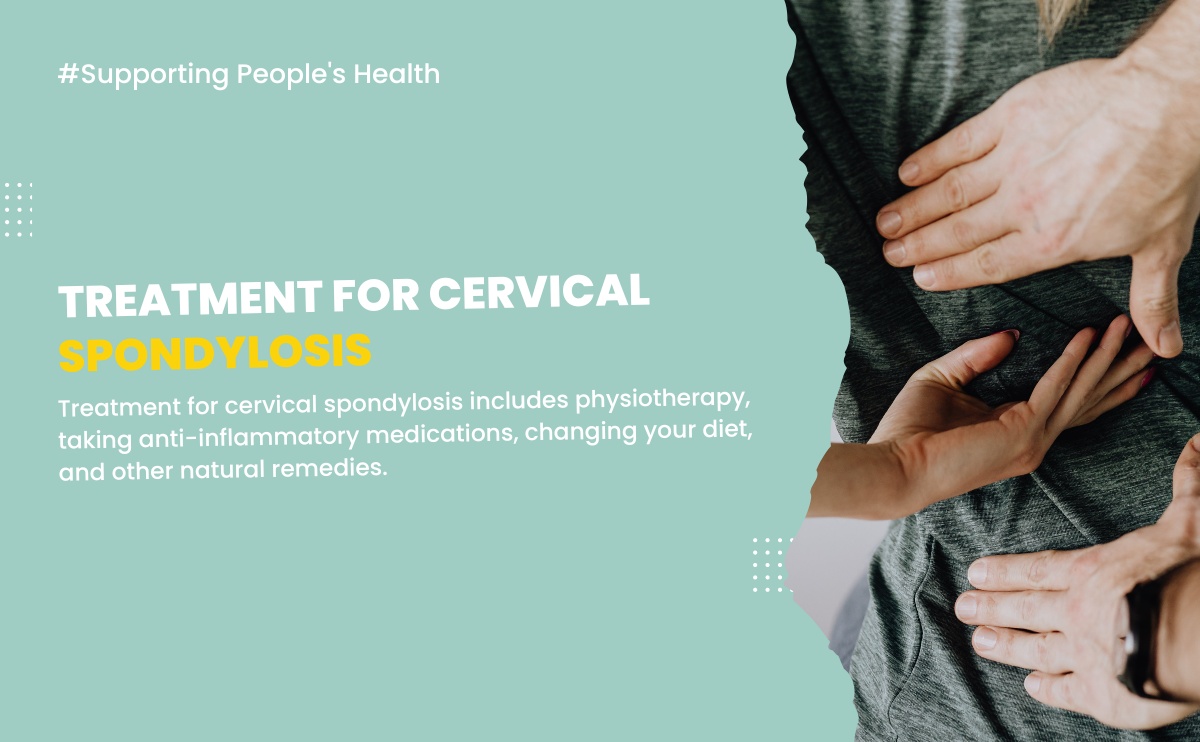Treatment for cervical spondylosis includes physiotherapy, taking anti-inflammatory medications, changing your diet, and other natural remedies. The aim of treatment is to relieve the symptoms of this condition, which include severe headaches, stiffness of the neck and shoulders, dizziness, and more. In some cases, surgery may be necessary. Find out from this article how you can get rid of neck pain!
Cervical Spondylosis: What It Is, Why It Happens, and What Its Symptoms Are?
Cervical spondylosis is a type of degenerative disease (arthritis) that affects the neck. Normally, the soft discs between the vertebrae of the spine cushion the impact. As people age and due to other risk factors, these discs compress, and the cartilage lining the vertebrae wears out. The vertebrae rub against each other, causing pain and other unpleasant symptoms.
Cervical spondylosis is extremely common, especially in people over the age of 40. Statistics show that spondylosis occurs in 50% of adults over 40 years of age and in 85% of people over 60 years of age. In men, the severity of the disease is greater compared to women.
In addition to age, risk factors that favor cervical spondylosis are:
- Occupation (incidence is higher in people who have carried heavy loads on their head or shoulders, in dancers and gymnasts)
- Congenital bone abnormalities (bone malformations put excessive stress on adjacent intervertebral discs, favoring the development of spondylosis)
- Obesity and sedentary lifestyle
- Performing repeated tasks that put pressure on the spine The condition most commonly causes pain and stiffness in the neck, but many people do not present visible symptoms. Treatment for cervical spondylosis includes several options, including medication, physiotherapy, and other procedures.
Medications for Cervical Spondylosis Part of the treatment for cervical spondylosis consists of taking analgesic and anti-inflammatory medications. These can be:
- Acetaminophen (to treat mild pain)
- Nonsteroidal anti-inflammatory drugs (aspirin, ibuprofen, and naproxen)
- Oral corticosteroids (to reduce inflammation)
- Muscle relaxants (these treat painful muscle spasms) In addition to analgesics and anti-inflammatory drugs for cervical spondylosis, in some cases, steroid-based injections are also needed. These are injected into the painful joint of the neck or into the space next to the spinal cord. The injections help relieve pain in the short term.
Cervical Spondylosis: Natural Treatment
In addition to drug treatment, patients with cervical spondylosis will also need other supplementary procedures and therapies. These include:
Physiotherapy. Specific exercises can help alleviate pain and strengthen weak or tense muscles. Physiotherapy programs for cervical spondylosis usually last between 6 and 8 weeks, with sessions held 2-3 times a week.
Applying ice or warm compresses to the painful area. These local treatments can help relieve pain in the short term.
Massage or acupuncture. The therapist may recommend a relaxing massage of the muscles in the cervical area to remove tension and improve blood flow, or acupuncture to relieve pain and improve the function of the affected area.
Diet in Cervical Spondylosis
Diet plays an important role in the treatment of cervical spondylosis, as certain foods can help reduce inflammation in the body, strengthen bones and muscles.
Foods recommended in cervical spondylosis
The recommended foods in cervical spondylosis are those rich in vitamins, minerals, and antioxidants that fight against free radicals and combat inflammation in the body. Here are some of them:
Foods rich in magnesium Magnesium is essential for bone health, and its deficiency in the body can lead to neck and muscle pain. Magnesium is often found abundantly in soybeans, beans, nuts, whole grains, fruits, and vegetables. According to specialists, adult men should consume 400 mg of magnesium per day, while women should have a daily intake of 320 mg.
Antioxidants, vitamin C, and A Antioxidants, vitamin C, and A help fight free radicals that cause inflammation. In addition, they help calm nerves and provide strength to the entire body. Fruits and vegetables are an excellent source of antioxidants, helping to relieve spinal pain.
Foods rich in calcium and vitamin D Calcium helps increase bone strength, while vitamin D helps in the absorption of calcium in the body. The recommended dose of calcium for an adult is about 1000-1500 mg, and vitamin D is about 400 to 800 IU per day. Foods rich in calcium are dairy products, almonds, sesame and sunflower seeds, soy products (tofu), and others.
Whole grains Refined flour promotes inflammation in the body, so it is essential to choose products made from whole grains. The latter are less inflammatory and much more nutritious. You can opt for whole grains, brown rice, pasta, and oat flakes.
Omega-3 fatty acids and vitamin E Consuming omega-3 fatty acids helps lower the level of inflammatory chemicals in the body. These fatty acids are abundant in fish (salmon, sardines, mackerel), as well as in other foods such as flax seeds, leafy vegetables, or nuts.
Other anti-inflammatory foods recommended in the treatment of cervical spondylosis are:
Apples Garlic Ginger Turmeric Foods to avoid If you suffer from cervical spondylosis, it is essential to avoid foods that promote inflammation in the body. These include:
Processed foods. They contain many chemicals and are not nourishing at all. Examples of such foods are fast food, ready-to-eat meals, refined sugars (candies, soft drinks), processed meats (bacon, sausages, ham), and many others. Dairy products with a high-fat content (they can promote inflammation) Red meat (you don’t have to completely give it up, but consumption should be limited) Also, it is important to quit smoking and alcohol consumption as they can cause weak and fragile bones. Alcohol leads to the loss of magnesium and calcium from the body, and smoking leads to bone damage.
Therefore, the treatment for cervical spondylosis includes several options. In addition to analgesic and anti-inflammatory medications, there are other measures you can take to relieve pain and dizziness.



